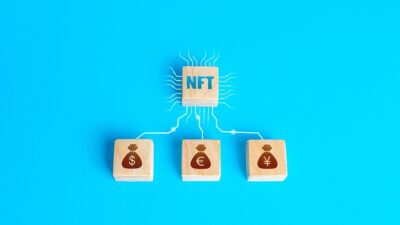The cryptocurrency landscape has evolved drastically since Bitcoin’s inception in 2009. We have witnessed surges in value, rampant speculation, regulatory scrutiny, and unprecedented mainstream adoption. As we stand on the cusp of another decade, what does the future hold for crypto? Here are some predictions that may shape the next ten years.
1. Increased Regulatory Clarity
As cryptocurrencies gain prominence, regulatory bodies across the globe will likely establish clearer frameworks governing their use. Countries will grapple with defining crypto as securities, commodities, or currencies, leading to enhanced compliance requirements. While this could stifle some innovation, it will also provide a safer environment for investors. Countries adopting favorable regulations could become new crypto hubs, similar to how Switzerland or Singapore currently operate.
2. Integration of Central Bank Digital Currencies (CBDCs)
Central banks worldwide are actively exploring or piloting their digital currencies. Within the next decade, we may see a widespread launch of CBDCs, which could co-exist with existing cryptocurrencies. These digital currencies could help governments maintain control over monetary policy while allowing instant transactions, reduced fees, and improved financial inclusion for the unbanked populations. However, the existence of CBDCs could also lead to tensions with decentralized cryptocurrencies that champion financial privacy.
3. Evolution of DeFi and Financial Services
Decentralized Finance (DeFi) has gained traction, providing traditional financial services like lending, borrowing, and trading without intermediaries. Over the next decade, we may witness further maturation of DeFi platforms, enhanced user experiences, and increased regulatory oversight. The continued adoption by traditional financial institutions—coupled with innovations in areas like insurance, prediction markets, and asset management—will likely reshape the financial landscape as we know it.
4. Interoperability Among Blockchains
Currently, various blockchains operate as isolated ecosystems, which can hinder user experience and access to diverse assets. The next decade may witness significant advancements in interoperability, enabling seamless movement of assets across different chains. Innovations such as cross-chain protocols and decentralized exchanges could decrease fragmentation and enhance liquidity, allowing users to interact with multiple platforms effortlessly.
5. Environmental Considerations and Sustainable Practices
As climate change continues to dominate global conversations, the environmental impact of cryptocurrencies—particularly those using proof-of-work mechanisms—will face heightened scrutiny. Over the next decade, we can expect an increased shift toward sustainable practices. This could include a shift to proof-of-stake models, carbon offset initiatives, and the development of energy-efficient mining technologies. Cryptocurrencies that prioritize sustainability could gain favor among environmentally conscious investors.
6. Tokenization of Real-World Assets
The tokenization of real-world assets—ranging from real estate to art—will likely gain traction over the next decade. By representing physical assets on the blockchain, ownership can be streamlined and made more accessible. This could democratize investment opportunities, allowing smaller investors to participate in markets that were previously out of reach, such as luxury real estate or fine art.
7. Enhanced User Experience and Adoption
Crypto platforms have historically struggled with user-friendliness. However, as more developers prioritize user experience, we can expect widespread adoption to rise in the next decade. Advances in mobile applications, intuitive wallets, and even integration with social media platforms could make crypto transactions as simple as sending a text message. An easier onboarding process for new users will play a crucial role in driving mass adoption.
8. Rise of NFTs and the Metaverse
Non-Fungible Tokens (NFTs) have already disrupted various industries, from art to gaming. As the metaverse gains momentum, NFTs will likely play a crucial role in digital identity, ownership, and commerce. Virtual real estate, in-game assets, and digital collectibles could become mainstream commodities, leading to new economic models and opportunities for artists and creators.
9. The Role of Artificial Intelligence in Crypto
AI and machine learning technologies will likely play an increasingly significant role in the crypto space. From algorithmic trading strategies to enhanced security measures, the partnership between AI and crypto could lead to more efficient markets. AI’s ability to analyze vast datasets can provide investors with insights into market trends and help mitigate risks.
10. Global Acceptance and Digital Economy Integration
As cryptocurrencies become more integrated into our daily lives, another key prediction is that we’ll see growing acceptance among major retailers, service providers, and even government agencies. The digital economy will evolve, moving closer to a hybrid system where traditional currencies coexist with cryptocurrencies. This shift could redefine payment methods, investment strategies, and economic models on a global scale.
Conclusion
The next decade promises to be transformative for the cryptocurrency landscape. While numerous challenges and uncertainties lie ahead—regulatory changes, technological hurdles, and market volatility—the potential for innovation and growth remains boundless. As we embrace these changes, it is essential to foster a balanced perspective that considers both the opportunities and potential risks associated with this evolving digital ecosystem. Whether you’re an investor, a developer, or simply a curious observer, keeping an eye on these trends will be crucial as we move into the next chapter of the crypto journey.



